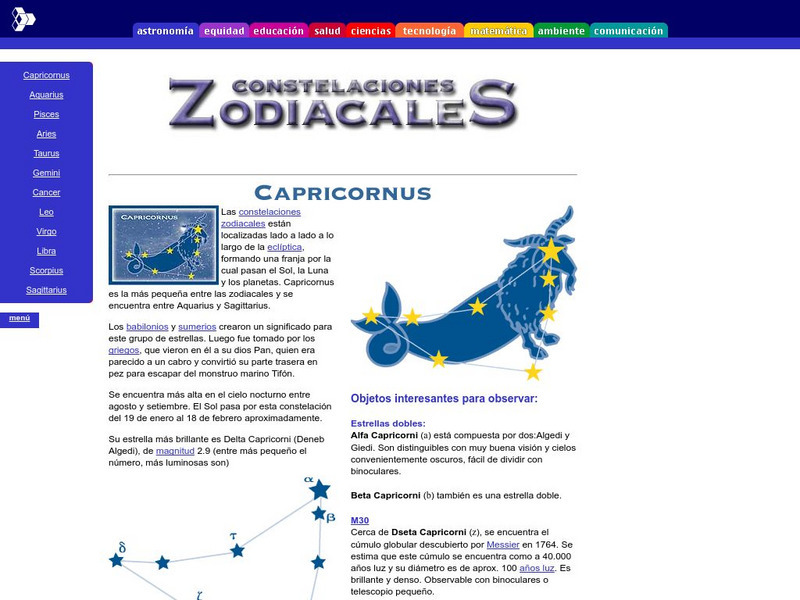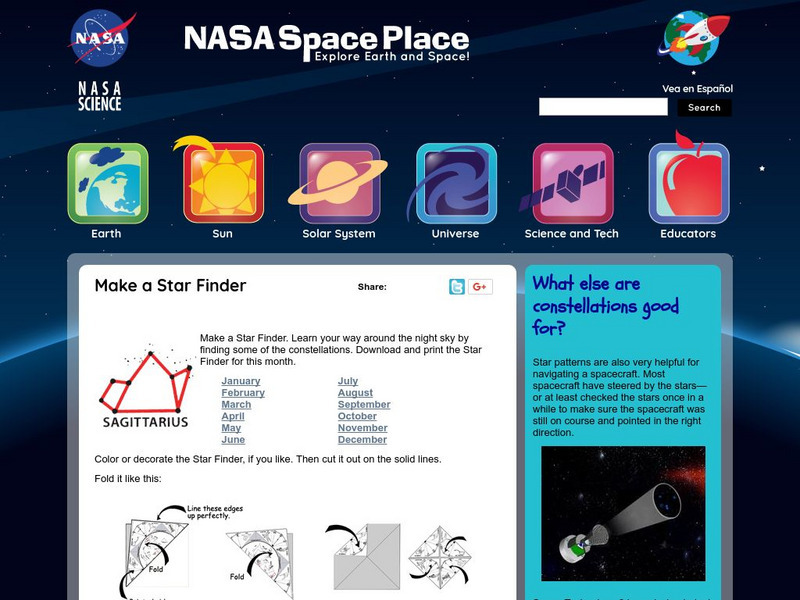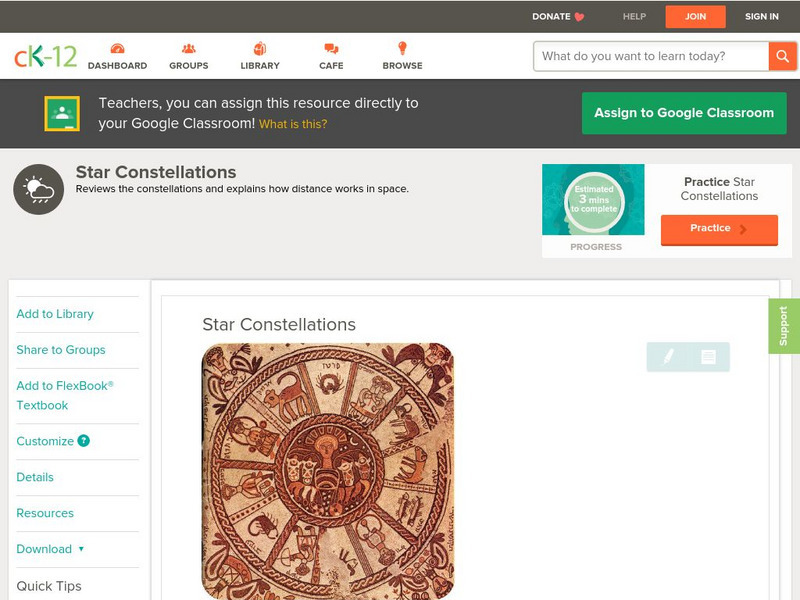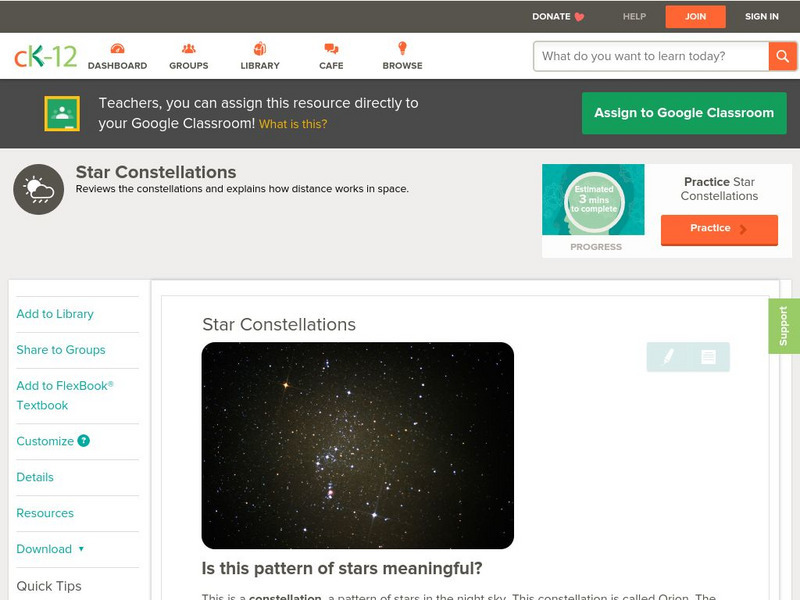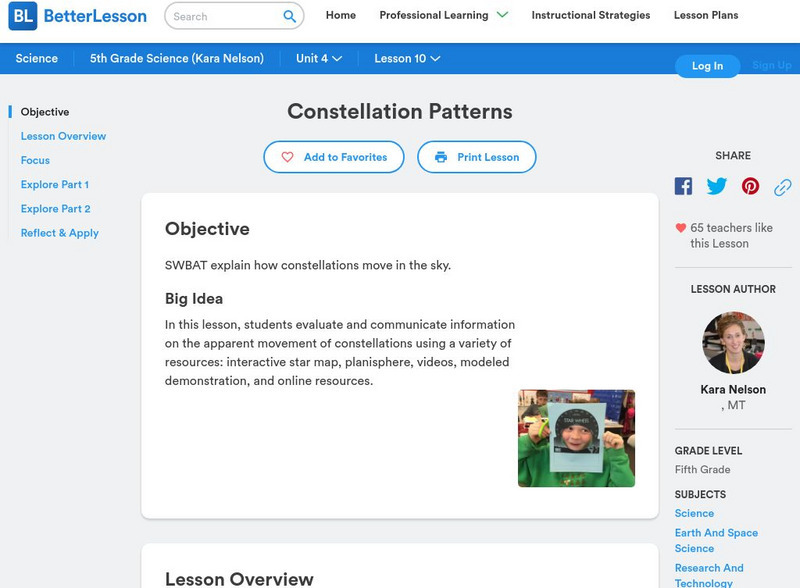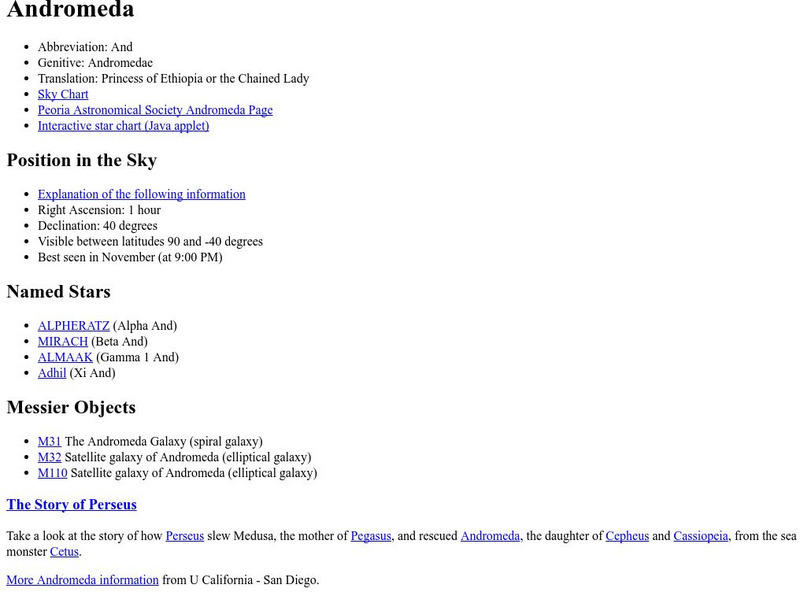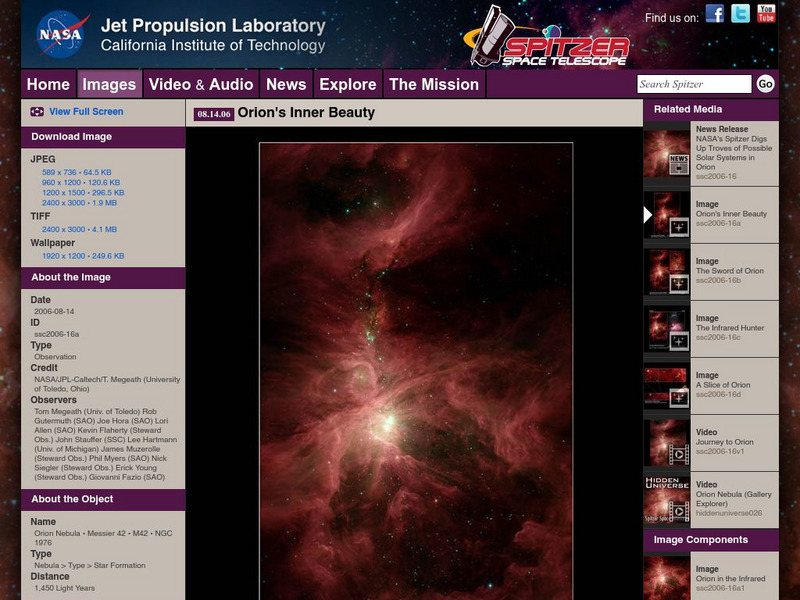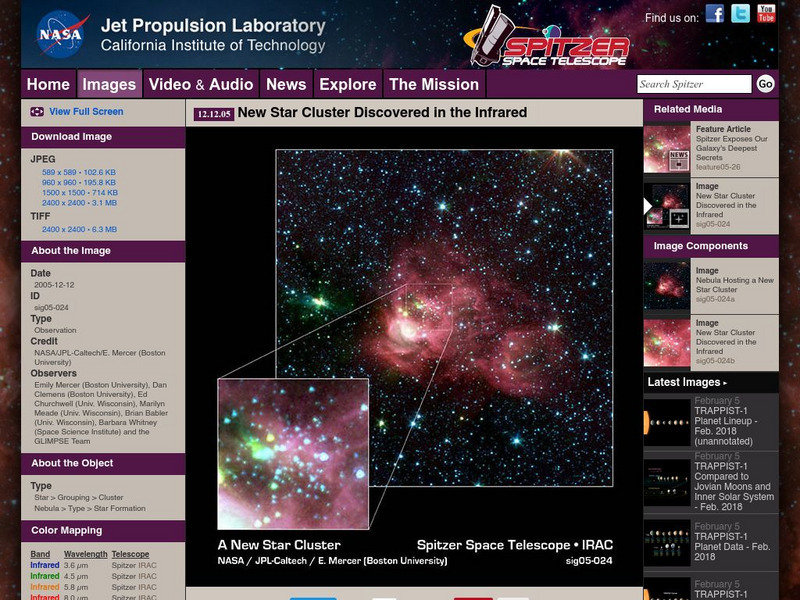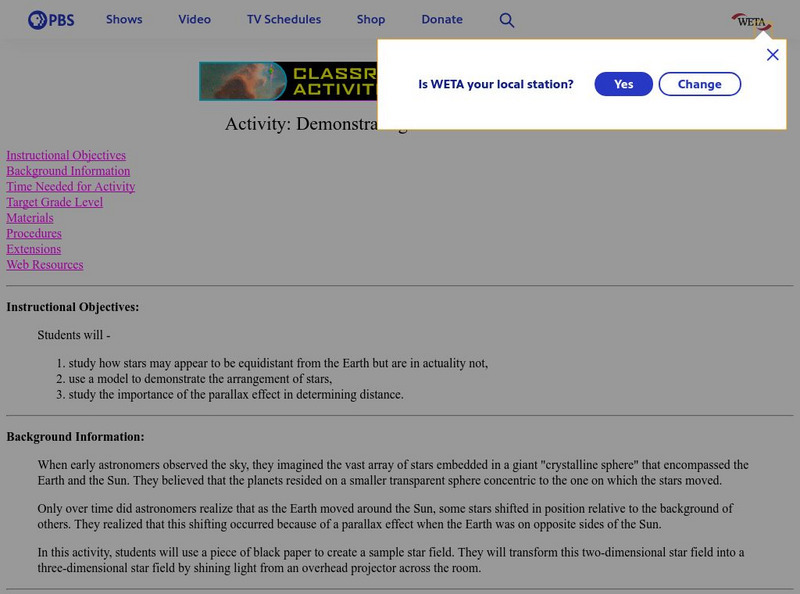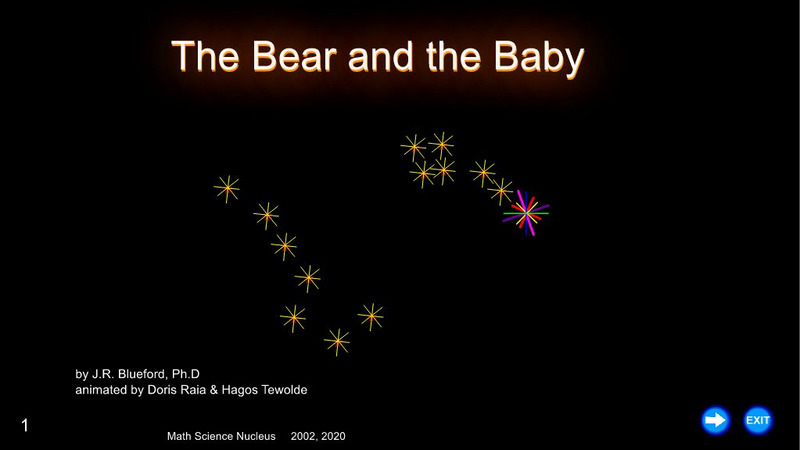Fundación Cientec
Fundacion Cientec: Constelaciones Zodiacales
This site provides detailed history and star cluster location information for each zodiac constellation. Also includes links (mostly to Wikipedia pages) to additional information for keywords that appear in the articles.
University Corporation for Atmospheric Research
Ucar: High Alt. Observatory: Nicolaus Copernicus (1473 1543)
This site contains a short biography of Copernicus.
Other
Astromador: Astronomia Para Amadores
This resources focuses exclusively on astronomy. It's packed with historical facts about space exploration, famous people who pioneered the study of stars and planets. It features chronological list of space exploration, current news,...
E-learning for Kids
E Learning for Kids: Science: Antarctica/ What Are the Different Parts of the Universe?
In this lesson, students learn about objects in the universe, including constellations, planets, meteors, asteroids, and comets.
NASA
Nasa: Make a Star Finder
Learning game and activity that teaches about the constellations by making a star finder to help locate them.
CK-12 Foundation
Ck 12: Earth Science: Star Constellations
[Free Registration/Login may be required to access all resource tools.] Overview of constellations.
CK-12 Foundation
Ck 12: Earth Science: Star Constellations
[Free Registration/Login may be required to access all resource tools.] Overview of constellations.
Famous Scientists
Famous Scientists: Tycho Brahe
Learn about this 16th century astronomer who was known for his accurate and comprehensive astronomical and planetary observations.
American Museum of Natural History
American Museum of Natural History: Carl Sagan and the Quest for Life in the Universe
A brief biography of American astronomer and science advocate Carl Sagan.
CK-12 Foundation
Ck 12: Plix: Scientific Notation: Light Years to the Centaurus Constellation
[Free Registration/Login Required] Study the diagram of the Centaurus Constellation, and then answer the challenge question to check for understanding.
Can Teach
Can Teach Lesson Plan: Graphing Constellations
In this lesson plan, students practice their graphing skills by following directions to recreate constellations.
Education.com
Education.com: Star Unit [Pdf]
[Free Registration/Login Required] In this lesson, 5th graders will demonstrate their understanding of constellation patterns and earth movement by writing and illustrating a legend about a specific constellation.
Other
Astro Mia: Tierra, Sistema Solar Y Universo
This site is a good resource to study Astronomy. It has six sessions: the Universe, the solar system, the earth and the moon, history of Astronomy, articles, famous astrologers and a glossary.
Better Lesson
Better Lesson: Constellation Patterns
Fifth graders evaluate and communicate information on the apparent movement of constellations using a variety of resources: interactive star map, planisphere, videos, modeled demonstration, and online resources.
Other
Neave Lab: Planetarium
This virtual planetarium allows you to view the sky as you wish. Using your mouse, point at stars to see their name, magnitude and constellation. You are also able to change the date, time, and location. This site is extremely...
CK-12 Foundation
Ck 12: Fifth Grade Science: Earth Science: Stars
Investigate what constellations are and how to use light-years as a unit of distance in this module. Learn how to measure star distances in creative ways.
Utah STEM Foundation
Utah Stem Action Center: Together We Can Rule the Galaxy
In this lesson plan, students will learn about Galileo Galilei and space.
NASA
Nasa Space Place: What Are Constellations?
A brief explanation of constellations. Discusses what determines what stars and constellations you see, the difference between astrology and astronomy, and how NASA uses the constellations.
University of Wisconsin
Constellations and Their Stars: Andromeda
This site has factual information about Andromeda. Also contains other links.
California Institute of Technology
Spitzer Science Center: Orion's Inner Beauty
Under the heading, "Orion's Inner Beauty" this site examines specific details of an image displaying the Orion nebula, which is stated to be "our closest massive star-making factory."
California Institute of Technology
Spitzer Science Center: A New Star Cluster
The image entitled, "A New Star Cluster" shows the formation of a new group of stars located in the Milky Way galaxy. The text below the image goes into detail on describing the various specifics of the image.
PBS
Pbs Teachers: Demonstrating the Distances of Stars
Investigate the use of the parallax effect for determining distance in space, and explore the arrangement and relative distance of stars in the galaxy. Create a sample star field and transform it into a three-dimensional model.
PBS
Star Map
This star map has five different constellations along with four newly discovered solar systems. If you are located in the northern hemisphere you can use this resource to locate stars.
Math Science Nucleus
Math Science Nucleus: The Bear and the Baby
This animation discusses the history of the constellations and the naming according to myths. The specific constellation dealt with in this animation is Ursa Major and Ursa Minor (the bear and the baby).
